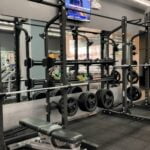Are you looking to improve your volleyball fitness? In this article, we will take a deep dive into the world of volleyball fitness exercises. Whether you are a beginner or a seasoned player, maintaining peak physical condition is crucial for success in volleyball. From dynamic warm-ups to strength training, agility drills to plyometric workouts, we will explore a wide range of exercises designed to enhance your performance on the court.
Volleyball is a fast-paced, physically demanding sport that requires players to possess a unique combination of strength, agility, speed, and endurance. Understanding the importance of fitness in volleyball is essential for players at every level. By incorporating specific fitness exercises into your training routine, you can improve your overall athleticism and elevate your game to new heights.
Throughout this article, we will cover various aspects of volleyball fitness including dynamic warm-up routines, strength training exercises, agility and speed drills, plyometric workouts, core strengthening techniques, flexibility and mobility exercises, as well as conditioning and endurance training. Additionally, we will discuss strategies for proper recovery and rest to ensure that you stay injury-free and avoid burnout during intense periods of play.
Whether you are aiming to increase your vertical jump or build the physical stamina required for long matches, these volleyball fitness exercises will help you reach your full potential on the court.
Dynamic Warm-Up
Before engaging in the intense physical activity of a volleyball game or practice, it is crucial to properly prepare the body through a dynamic warm-up. This phase of the workout routine focuses on increasing blood flow to the muscles, loosening joints, and activating the nervous system to improve overall performance on the court. Here are some essential components of a dynamic warm-up for volleyball players:
1. Cardiovascular Exercise: Start with light aerobic exercises such as jogging, jumping jacks, or high knees to elevate heart rate and increase blood flow to working muscles.
2. Dynamic Stretches: Perform dynamic stretches that mimic movements used in volleyball, such as arm circles, leg swings, hip rotations, and side lunges. This helps improve flexibility and mobility specific to the demands of the sport.
3. Movement Preparation: Incorporate movements that prepare the body for explosive actions on the court, such as skipping, shuffling, and lateral bounding.
Incorporating a dynamic warm-up routine not only reduces the risk of injury but also enhances performance during training or competition by priming the body for optimal movement patterns necessary in volleyball. It is an essential step that should not be overlooked in any volleyball fitness regimen.
Strength Training
In the sport of volleyball, having strong and explosive muscles is crucial for performing at a high level. Incorporating specific strength training exercises into your workout routine can help improve your power and explosive strength on the court.
One effective exercise for developing power in the lower body is the squat. Whether using a barbell, dumbbells, or just body weight, squats target the quadriceps, hamstrings, and glutes, which are all essential muscle groups for explosive movements such as jumping and diving.
Another key exercise for building power in volleyball players is the deadlift. This compound movement targets multiple muscle groups including the hamstrings, glutes, lower back, and upper back. By performing deadlifts regularly as part of a strength training regimen, players can increase their overall strength and explosiveness on the court. Additionally, incorporating plyometric exercises like box jumps and explosive lunges can further enhance a player’s ability to generate power during dynamic movements.
Incorporating Olympic lifts such as clean and snatch into a volleyball fitness routine can also significantly improve power output. These complex movements require full-body coordination and explosiveness which directly translate to increased on-court performance. By dedicating time to strength training exercises focused on building power and explosive strength, volleyball players can take their game to the next level by being stronger, faster, and more dynamic athletes.
Agility and Speed Drills
Agility and speed are crucial in volleyball, where quick movements and rapid reactions can make a significant difference in gameplay. Incorporating agility and speed drills into your training regimen can help improve your quickness and reaction time on the court, ultimately enhancing your overall performance during matches.
Footwork Drills
Effective footwork is essential for fast, agile movements on the volleyball court. One popular agility drill is the ladder drill, which involves rapidly moving through a series of rungs laid out on the ground in various patterns. Another beneficial footwork drill is the cone shuffle, where players weave in and out of cones placed at specific distances to mimic the lateral movements often required in volleyball.
Reaction Time Exercises
Improving reaction time is vital for successful defensive plays and quick offensive responses. A simple but effective reaction time exercise is the “mirror drill,” where two players face each other and mirror each other’s movements as quickly as possible. Additionally, incorporating exercises that require rapid decision-making, such as agility ladder sprints with color-coded cues for directional changes, can also help sharpen reaction time on the court.
Court-Specific Drills
To further enhance agility and speed for volleyball, it’s beneficial to include drills that simulate game-like scenarios. For example, setting up a series of markers to replicate the movement patterns needed for different defensive positions can help players react more efficiently during actual gameplay. These court-specific drills not only improve agility and speed but also provide a practical application of these skills within the context of volleyball.
Incorporating these agility and speed drills into your volleyball fitness regimen will undoubtedly contribute to better performance on the court. By focusing on quickness and reaction time through targeted exercises, players can elevate their overall agility and speed, gaining a competitive edge in their game.
Plyometric Workouts
Plyometric exercises are an essential component of any volleyball fitness routine, as they focus on improving explosive power and overall athletic performance. These workouts involve quick, powerful movements that aim to enhance an athlete’s ability to generate force rapidly. By incorporating plyometric drills into their training regimen, volleyball players can increase their vertical jump, agility, and speed on the court.
One effective plyometric exercise for volleyball players is the depth jump. In this drill, athletes step off a box or platform, then immediately upon landing, jump as high as possible. This exercise helps develop the muscles’ stretch-shortening cycle, allowing players to generate more power in their jumps. Another beneficial plyometric workout is the bounding drill, which involves performing consecutive broad jumps while focusing on maximizing distance and height with each leap.
It’s important for volleyball players to approach plyometric workouts with caution and proper form. Due to the high-impact nature of these exercises, athletes should gradually progress in intensity and duration to prevent injury. Additionally, incorporating sufficient rest periods between plyometric sessions is crucial for allowing the body to recover and adapt to the demands of these challenging workouts.
When implementing plyometric exercises into a volleyball fitness program, it’s essential for players to work closely with a qualified strength and conditioning coach to ensure that they are executing the drills correctly and safely. With commitment and dedication to their plyometric training, volleyball athletes can expect to see significant improvements in their vertical jump and overall athletic performance on the court.
| Plyometric Workouts | Benefits |
|---|---|
| Depth Jumps | Develops stretch-shortening cycle for increased power |
| Bounding Drills | Improves height and distance in broad jumps |
Core Strengthening
Importance of Core Strength in Volleyball
In volleyball, having a strong and stable core is essential for maintaining balance, controlling movements, and generating power during plays. A solid core not only helps players to execute powerful spikes and serves but also enables them to maintain proper body positioning while diving, blocking, and passing. Additionally, strong core muscles can prevent lower back injuries, which are common among volleyball players due to the repetitive jumping and twisting motions involved in the sport.
Core Strengthening Exercises for Volleyball Players
To improve their performance on the court, volleyball players should incorporate specific core strengthening exercises into their fitness routines. Plank variations, Russian twists, bicycle crunches, and leg raises are effective exercises that target the abdominal muscles, obliques, and lower back. These exercises help to build overall core strength as well as improve stability and balance, which are crucial for executing precise movements during a match.
Balancing Exercises
In addition to traditional core strengthening exercises, volleyball players can benefit from incorporating balancing drills into their training regimen. Single-leg squats, stability ball exercises, and bosu ball workouts challenge the core muscles by requiring constant engagement to maintain balance.
Improving proprioception through these specific drills can enhance a player’s ability to react quickly and adjust their position on the court with precision. By developing better balance through targeted exercises, volleyball players can optimize their performance during matches while reducing the risk of injury.
By integrating these core strengthening exercises into their training routine, volleyball players can improve their stability and balance on the court. This will not only enhance their overall performance but also reduce the likelihood of injuries caused by lack of muscle support during explosive movements.
Flexibility and Mobility
One effective stretching exercise for volleyball players is the standing hamstring stretch, which targets the muscles in the back of the thighs. To perform this stretch, players should stand with their feet hip-width apart, then hinge at the hips and reach toward their toes while keeping their back flat. This stretch helps improve flexibility in the hamstrings, which is important for movements such as jumping and lunging during volleyball games.
Another beneficial stretch is the kneeling hip flexor stretch, which focuses on the muscles at the front of the hips. To do this stretch, players should kneel on one knee with the other foot in front, then lunge forward while keeping their torso upright. This helps improve hip flexor mobility, which is essential for movements like sprinting and diving on the court.
It’s important for volleyball players to incorporate flexibility and mobility exercises into their training routine to maintain peak performance and reduce the risk of injury on the court.
| Stretching Exercise | Targeted Muscles |
|---|---|
| Standing Hamstring Stretch | Muscles in the back of the thighs |
| Kneeling Hip Flexor Stretch | Muscles at the front of the hips |
Conditioning and Endurance
Volleyball is a fast-paced and physically demanding sport that requires athletes to have exceptional conditioning and endurance. Without proper physical stamina, players may struggle to keep up during long, demanding matches and may experience fatigue that can affect their performance on the court. To build the necessary physical stamina for volleyball, it is important to incorporate specific conditioning and endurance exercises into your training routine.
To enhance your volleyball fitness exercises, consider incorporating the following conditioning and endurance workouts:
- Interval Training: Incorporate high-intensity interval training (HIIT) into your workout routine to improve cardiovascular endurance. This can include exercises such as sprints, shuttle runs, and jump rope intervals.
- Circuit Training: Design a circuit of strength and cardio exercises with minimal rest in between. This can include activities like lunges, push-ups, burpees, and high knees.
- Cardiovascular Workouts: Engage in activities such as running, cycling, or swimming on non-training days to build overall cardiovascular fitness. These activities will help improve your endurance during matches.
By incorporating these conditioning and endurance exercises into your training regimen, you can significantly improve your physical stamina for long volleyball matches. Additionally, focusing on building endurance will also help reduce the risk of injury due to fatigue during gameplay. Remember to consult with a coach or fitness professional to develop a personalized program that aligns with your specific needs as a volleyball player.
Recovery and Rest
In conclusion, incorporating volleyball fitness exercises into a player’s routine is essential for overall performance on the court. From dynamic warm-ups to strength training, agility drills, plyometric workouts, core strengthening, flexibility routines, and conditioning exercises, each aspect of physical fitness plays a crucial role in enhancing a player’s skills and abilities. However, it is equally important to understand the significance of recovery and rest in a volleyball player’s training regimen.
Taking the time to properly rest and recover allows the body to repair and rebuild itself after intense physical activity. This is especially crucial in a high-impact sport like volleyball, where players are constantly moving and exerting themselves during matches and practices.
By implementing strategies for rest and recovery such as adequate sleep, active recovery sessions, proper nutrition, hydration, and listening to the body when it signals fatigue or overuse, players can avoid burnout and reduce the risk of injury.
Ultimately, the combination of dedicated training through volleyball fitness exercises and prioritizing recovery and rest will contribute to a player’s overall health, well-being, and performance on the court. Understanding that both aspects are equally important will lead to longevity in a player’s career as well as sustained success in their volleyball endeavors. By maintaining this balance between exertion and restoration, players can optimize their physical capabilities while minimizing the potential for wear-and-tear on their bodies.
Frequently Asked Questions
How Can I Improve My Physical Fitness for Volleyball?
Improving physical fitness for volleyball involves a combination of strength, agility, and endurance training. Resistance training, plyometrics, and cardiovascular exercises can help improve overall fitness and performance on the court.
How Do You Train Your Body for Volleyball?
Training the body for volleyball requires a focus on specific skill development, such as jumping, lateral movement, and upper body strength. A training regimen should include exercises that target these areas, as well as core stability and flexibility.
What Exercises Help You Serve in Volleyball?
Serving in volleyball requires a combination of upper body strength and coordination. Exercises that focus on shoulder stability, arm strength, and explosive power can help improve serving technique. Additionally, practicing serving drills regularly is essential for skill refinement and accuracy.

Passionate about providing useful information to anyone with an interest in the field of Personal Training, I strive to pass on to our readers quality information and to answer any questions about Personal Trainers, the work they do and how to become one.





